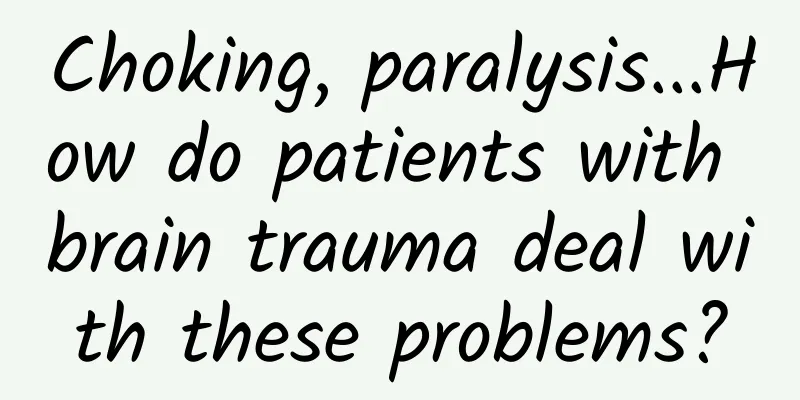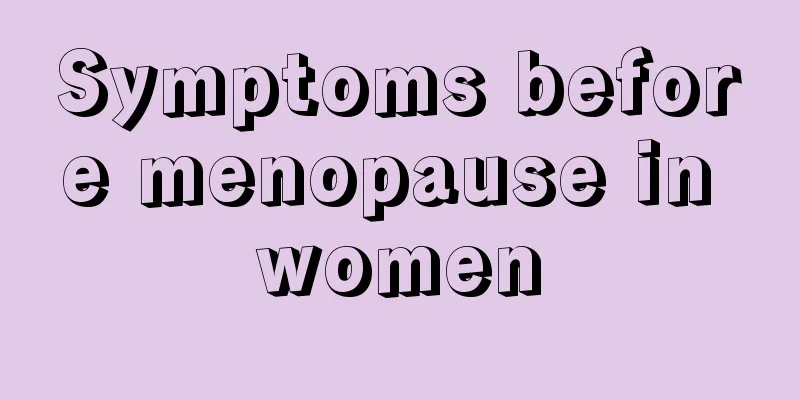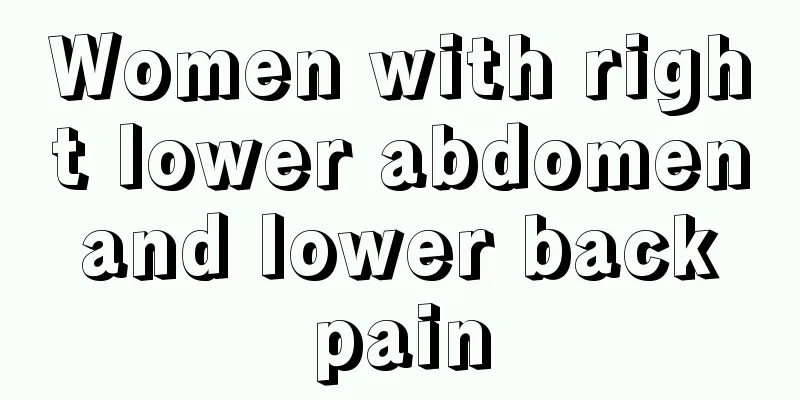Choking, paralysis...How do patients with brain trauma deal with these problems?

|
Author: Zhang Hao, Chief Physician, China Rehabilitation Research Center (Beijing Boai Hospital) Reviewer: Wan Weiqing, Chief Physician, Beijing Tiantan Hospital, Capital Medical University Brain injury is a serious injury that can cause many problems for patients. Rehabilitation is a complex and long process. It is important for patients and their families to understand the relevant knowledge. The choking and coughing phenomenon that occurs when patients with brain trauma eat is often worrying. The main reason for this phenomenon is that the swallowing reflex in the patient's throat is damaged. Under normal circumstances, the swallowing reflex can ensure that food enters the esophagus smoothly, but after brain trauma, the patient may have a delayed or abnormal swallowing reflex, causing food to enter the airway by mistake, thereby causing choking and coughing. This will not only affect the patient's eating experience, but may also cause serious complications such as lung infection. To address this problem, medical staff usually take measures such as inserting a gastric tube, small intestinal tube or gastrostomy to ensure the patient's nutritional intake. At the same time, professional swallowing training, such as using ice cubes to stimulate the soft palate and manual stimulation of the root of the tongue, will be used to gradually restore the patient's swallowing function. When the patient's autonomous swallowing ability reaches a certain level, auxiliary measures such as gastric tubes can be gradually removed. In order to reduce the occurrence of choking, patients with brain trauma should also pay attention to adjusting their posture when eating. For patients who can sit up, it is recommended that they keep their head and lower jaw as close to the chest as possible when swallowing, and hold their breath to ensure that the food can enter the esophagus smoothly. After swallowing the food, empty swallowing is also required to clean the remaining food in the throat. For bedridden patients, the head of the bed should be raised 30 degrees and lie on the healthy side to reduce the risk of choking. In addition, the temperature and texture of the food must also be strictly controlled. Food should not be too hot or too cold to avoid irritating the patient's throat; at the same time, smooth, non-sticky foods should be selected, such as egg custard, yogurt, etc., to reduce the possibility of choking. Figure 1 Original copyright image, no permission to reprint After a brain injury, patients often experience a series of motor function problems. These problems include but are not limited to paralysis, dystonia, balance disorders, involuntary movements, and abnormal posture control. Paralysis is one of the most common motor function disorders, which is mainly manifested as decreased mobility of one or both limbs. Abnormal muscle tone may cause the patient's muscles to become stiff or weak and relaxed, affecting normal movement. Involuntary movements are manifested as the patient's inability to control his or her muscle activity and unconscious movements. Abnormal posture control may cause the patient to sit or stand unsteadily, or even fall. Rehabilitation therapists will develop personalized rehabilitation plans for these motor function problems. For paralyzed patients, physical therapy, occupational therapy and other means will be used to gradually restore their motor ability. Physical therapy includes electrical stimulation, massage, etc., which aims to promote muscle contraction and blood circulation; occupational therapy trains patients' motor ability and coordination through actual activities in daily life. For patients with abnormal muscle tone, muscle tone will be adjusted through drugs, physical therapy or surgery. For patients with balance disorders and abnormal posture control, their symptoms will be improved through balance training, posture adjustment and other methods. In addition to motor function problems, patients with brain trauma may also experience posture control disorders such as spinal curvature and walking in circles. These disorders also stem from abnormal muscle strength and muscle tension. During rehabilitation treatment, therapists will pay close attention to changes in the patient's posture and use tools such as posture mirrors to remind the patient to adjust his posture. At the same time, they will also use stimulation, activities and other methods to strengthen the patient's muscle strength so that he can maintain a normal posture. Figure 2 Original copyright image, no permission to reprint There are many factors that affect the functional recovery of patients with brain trauma. Among them, the severity and location of the injury are important factors in determining the patient's prognosis. The more severe the injury and the more critical the location, the more difficult it is for the patient to recover. In addition, whether the treatment is timely, the patient's education level, age, and family support will also have an impact on the patient's recovery. Therefore, during the rehabilitation treatment process, medical staff need to comprehensively consider these factors and develop a personalized rehabilitation plan for the patient. For patients with brain trauma and their families, multiple aspects need to be paid attention to during functional recovery training. Patients need to strictly follow the doctor's orders and maintain good compliance, while ensuring the safety of the training process and following scientific methods. Family members should not take care of everything, but should provide necessary assistance when the patient has difficulty completing the task to prevent falls. For patients with cognitive impairment, family members need to remind and assist them in completing training tasks in a timely manner, and encourage patients to complete training independently within their capabilities. |
<<: Brain injury recovery tips: Unlocking key skills such as breathing, vision, and self-care
>>: Hemodialysis: How to exercise? What should I pay attention to?
Recommend
How to massage breasts to release milk
During the confinement period, mothers are always...
Why does uterine erosion occur? Five reasons are the culprits
Uterine erosion is also called cervical erosion. ...
What should I pay attention to during vaginal puncture?
The structure of a woman's vagina is very com...
How many months can pregnant women take calcium supplements?
During pregnancy, the pregnant woman has to bear ...
What is the situation of leucorrhea suddenly turning brown?
If the color of leucorrhea suddenly changes, you ...
What is the origin and customs of National Day? The significance of National Day
National Day is a new, all-people festival that c...
What is the date and day of the Spring Festival in 2021? How will the Spring Festival in 2021 be celebrated?
There is only one month left before the 2020 Spri...
What fruits are good for detoxification and blood discharge during menstruation
During the menstrual period, although women's...
Poor digestion, is it caused by stress?
Have you noticed that as long as you are under a ...
What causes vaginal itching?
Vaginal itching is a common symptom. For friends ...
How does AI work in the field of marriage and love?
background As we all know, Japan's society is...
Why are my nipples so hard? Gynecologists tell you the answer
When nipples become hard, female friends should l...
How long can you live with cervical cancer in situ
Cervical cancer is a very serious disease. In the...
There are five things women should not do in bed, or it will kill them!
Sufficient sleep is a prerequisite for beauty. Ho...
Will myomectomy affect fertility?
Some people say that if a woman has never given b...









